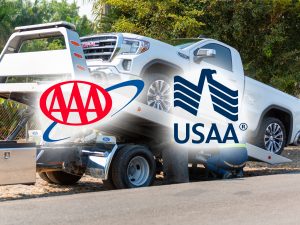Learning to drive and getting your first car is an exciting milestone. However, with great independence comes great responsibility—and a key aspect of that responsibility is securing car insurance. For new drivers, car insurance can be a financial challenge, as premiums tend to be higher for those lacking driving history. But don’t worry—affordable options are out there, and with the right approach, you can save money while getting the coverage you need.
This guide breaks down everything you need to know about car insurance for beginners, from understanding your options to practical tips for lowering your costs.
Understanding New Driver Insurance
Car insurance is mandatory in most states, and it serves as financial protection in case of accidents or damage. For new drivers, insurance is especially important as it provides peace of mind and safeguards your financial security.
Why is Car Insurance More Expensive for New Drivers?
New drivers are often considered “high risk” because they lack experience behind the wheel. Insurers rely on statistics, and data shows that younger, less experienced drivers are more likely to be involved in accidents. This risk translates into higher premiums for beginner drivers.
Factors That Influence New Driver Insurance Rates:
- Age and Experience: Younger drivers and those with little road experience often face higher premiums.
- Type of Car Driven: Cars that are expensive to repair or have high theft rates can increase insurance costs.
- Driving History (if applicable): Tickets, accidents, or violations from practice driving logs can affect your rates.
- Location: Urban areas often have higher insurance rates due to increased traffic risks.
- Coverage Level: The more extensive the insurance coverage, the higher your premiums are likely to be.
Types of Affordable Car Insurance for Beginners
Understanding the different types of car insurance coverage is crucial to finding the right policy for your needs and budget. Here’s a quick overview of the most common types of coverage available to new drivers.
1. Liability Insurance
This is the most basic and often the cheapest form of car insurance. It covers damages and injuries you might cause to others in an accident but does not cover damage to your own vehicle.
2. Collision Coverage
This type of insurance covers the cost of repairing or replacing your car if it’s damaged in an accident, regardless of who’s at fault. It’s particularly valuable to new drivers whose lack of experience might increase the likelihood of collisions.
3. Comprehensive Coverage
Also known as “non-collision insurance,” comprehensive coverage protects your car from theft, vandalism, and natural disasters. While this is a pricier option, it provides greater peace of mind.
4. Specialized Policies for New Drivers
Some insurers now offer policies tailored specifically for new or young drivers. These often include features like driver’s education discounts, usage-based insurance (UBI), or flexible payment options.
Tips to Lower Insurance Costs for New Drivers
If you’re looking to save money without compromising on coverage, these tips can make a significant difference.
1. Look for Safe Driving Discounts
Some insurers offer discounts for completing a certified driver’s education or defensive driving course. Enrolling in these programs not only makes you safer on the road but also lowers your insurance premiums.
2. Join Driver Monitoring Programs
Usage-based insurance programs, such as Progressive’s Snapshot or State Farm’s Drive Safe & Save, can reduce rates if you prove to be a responsible driver. These programs track driving behavior through mobile apps or hardware installed in your car.
3. Choose the Right Car
The make and model of your car can significantly influence your insurance costs. Opt for vehicles with high safety ratings, low repair costs, and anti-theft features. SUVs and sedans are usually more affordable to insure than sports cars.
4. Maintain a Good Credit Score
Believe it or not, your credit score can impact your insurance rates. Insurers use credit information as a predictor of risk. By paying bills on time and keeping your credit utilization low, you could earn better rates.
5. Bundle Policies
If your family already holds policies for home or life insurance, check if bundling car insurance with the same company offers a multi-policy discount.
6. Consider Being Added to a Parent’s Plan
For younger, first-time drivers, joining your parents’ insurance plan may save money compared to purchasing your own policy. Be mindful, though, as this responsibility can increase their premiums if you have driving accidents.
Frequently Asked Questions
What Is the Average Cost of New Driver Car Insurance?
The cost varies, but on average, new drivers can expect to pay $1,500 to $3,000 per year, depending on factors like age, driving record, and the type of coverage selected. Comparing quotes from multiple providers is essential to find the most competitive rates.
How Can I Find the Most Affordable Insurance Rates for New Drivers?
Start by shopping around! Use comparison sites like The Zebra, NerdWallet, or GoCompare to review options. Ask about scholarships for young drivers, safe driving programs, and low-mileage discounts.
Can Joining My Parents’ Insurance Plan Be Cheaper?
Yes! Adding a new driver to a family policy is often more cost-effective than purchasing a separate plan. However, consider the potential increase in their premium and have an honest conversation to weigh the pros and cons.
Affordable and Smart Insurance Begins with Awareness
Finding affordable car insurance as a new driver doesn’t have to drain your wallet. By understanding how insurers determine rates, choosing the right type of coverage, and exploring ways to reduce costs, you can safeguard your finances while hitting the road.
Affordable car insurance begins with preparation and education. Take the time to research policy options, explore discounts, and connect with reliable insurers who specialize in serving new drivers.
Got questions or concerns about finding the best car insurance? Share this guide with your friends, or subscribe to our newsletter for more money-saving tips in the driver’s seat. Better yet, don’t forget to leave a comment below—we’d love to hear your experience as a new driver!




